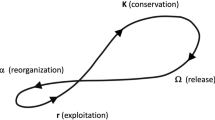Abstract
The goal of land consolidation in China is still to develop agricultural production. The study of landscape effects of land consolidation projects (LCPs) faces many difficulties because of the lack of government’s interest and data. This paper, taking Tianmen City of Hubei Province in Central China as an example, presents a methodology for analyzing landscape effects of LCPs by GIS and Fragstats3.3. It describes landscape effects with indexes of Patch Density (PD), Largest Patch Index (LPI), Landscape Shape Index (LSI), Interspersion and Juxtaposition Index (IJI), Aggregation Index (AI), and Shannon’s Diversity Index (SHDI), showing more regular shape, simpler structure and less habitat diversity after LCPs. It computes ten landscape indexes of four categories of patches including Cultivated Land, Road, Water Channel, and River and Pond. The indexes show that 1) cultivated land becomes more fragmental in patch area, less irregular in patch shape and more concentrated in block; 2) the transport capacity of roads and irrigation and drainage capacity of water channels have been improved; 3) the landscape change of river and pond can be summarized as decreasing scale, more regular shape, reducing connectivity and diversity of the class. LCPs can facilitate agricultural production as well as protect cultivated land and food security. However, it is doubted that the increase of cultivated land from LCPs results from the reducing in landscape diversity of water area.
Similar content being viewed by others
References
Bonfanti P, Fregonese A, Sigura M, 1997. Landscape analysis in areas affected by land consolidation. Landscape and Urban Planning, 37(1–2): 91–98.
Coelho J C, Portela J, Pinto J A, 1996. A social approach to land consolidation schemes—A Portuguese case study: The Valença Project. Land Use Policy, 13(2): 129–147.
Crecente R, Alvarez C, Fra U, 2002. Economic, social and environmental impact of land consolidation in Galicia. Land Use Policy, 19(2): 135–147.
Li Linfeng, Zhu Deju, Liu Liming, 2006. On rural landscape diversity affected by land consolidation: A case in Datangbu land consolidation project in Xinfeng projects. Research of Agricultural Modernization, 27(3): 234–237. (in Chinese).
Lin J Y, 1992. Rural reform and agricultural growth in China. American Economic Review, 82(1): 43–51.
Liu Zongqun, Zhou Zhiyue, 2003. Land rearrangement in Karst area and application of landscape ecology methods—A case study of Huangtian, Fuling, Chongqing region. Jourual of Southwest China Normal University (Natural Science), 28(3): 479–483. (in Chinese)
Tan Shuhao, Nico Heerink, Qu Futian, 2006. Land fragmentation and its driving forces in China. Land Use Policy, 23(3):272–285. DOI: 10.1016/j.landusepol.2004.12.001
The Ministry of Land and Resources P. R. C., 2000–2006. China Land & Resources Almanac. Beijing: Editorial Department of China Land & Resources Almanac. (in Chinese)
Van Huylenbroeck G, Coelho J C, Pinto P A, 1996. Evaluation of land consolidation projects (LCPs): A multidisciplinary approach. Journal of Rural Studies, 12(3): 297–310.
Wang Ailing, Zhao Gengxinn, Li Zhanjun, 2006. Intenrated evaluation method for project post-evaluation of land consolidation benefits. Transactions of the CSAIJ, 22(4): 58–61. (in Chinese)
Wang Wei, Yang Xiaodong, Zeng Hui et al., 2005. Method for comprehensive benefit evaluation of land consolidation. Transactions of the CSAE, 21(10): 70–73. (in Chinese)
Wu Ziping, Liu Minquan, DAVIS J, 2005. Land consolidation and productivity in Chinese household crop production. China Economic Review, 16(1): 28–49. DOI: 10.1016/j.chieco.2004.06.010
Yang Xiaoyan, Yan Donghao, Cheng Feng, 2005. Study on landscape effects from cultivated land consolidation. Journal of Natural Resources, 20(4): 572–581. (in Chinese)
Zhang Zhanlu, Yang Qingyuan, 2005. Driving force analysis of the consolidation of country residential areas in Shunyi District. Transactions of the CSAE, 21(11): 49–53. (in Chinese)
Zhang Zhengfeng, Chen Baiming, 2002. Primary analysis on land readjustment potentiality. Journal of Natural Resources, 17(6): 664–669. (in Chinese)
Zhang Zhengfeng, Chen Baiming, 2003. Primary analysis on land consolidation benefits. Transactions of CSAE, 19(2): 210–213. (in Chinese)
Author information
Authors and Affiliations
Corresponding author
Additional information
Foundation item: Under the auspices of National Natural Science Foundation of China (No. 70673097)
Rights and permissions
About this article
Cite this article
Gu, X., Dai, B. & Chen, B. Landscape effects of land consolidation projects in Central China—A case study of Tianmen City, Hubei Province. Chin. Geogr. Sci. 18, 41–46 (2008). https://doi.org/10.1007/s11769-008-0041-5
Received:
Accepted:
Issue Date:
DOI: https://doi.org/10.1007/s11769-008-0041-5




